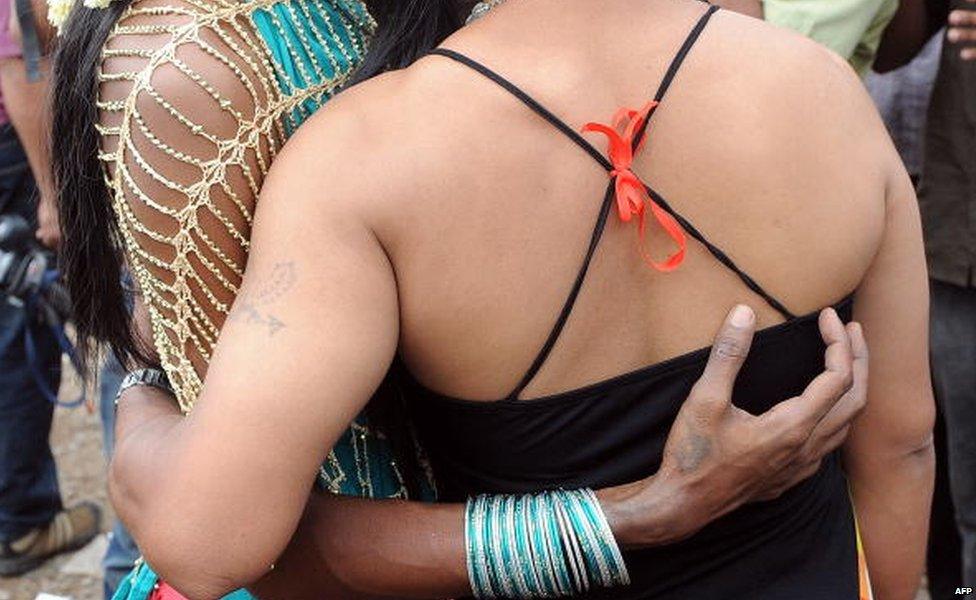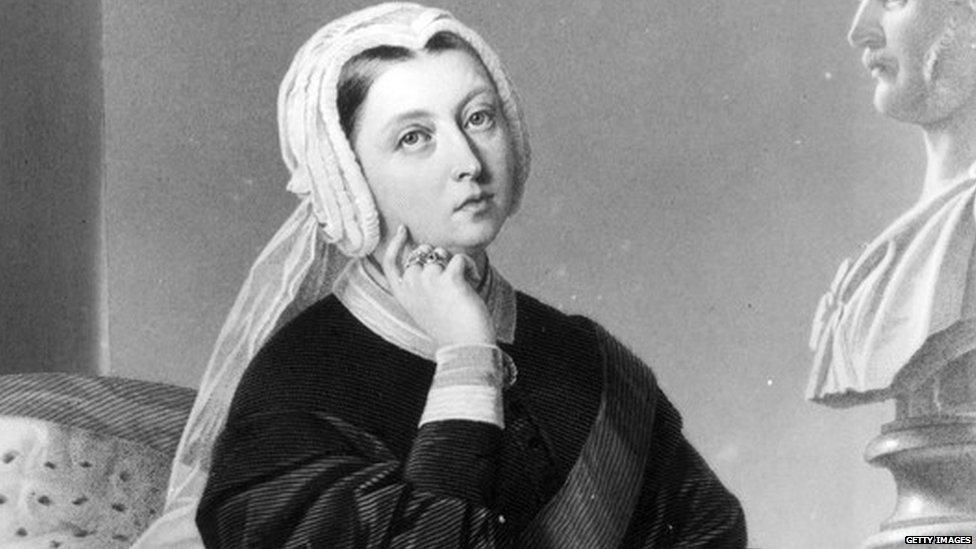Viewpoint: Watching the lesbians in India
- Published

"This whole lesbian thing is not as new-fangled as people are making it out to be"
Writer and humourist Shovon Chowdhury gives his perspective on a recent advert featuring lesbians in India, arguing that we shouldn't be surprised, given India's ancient liberal tradition, which accepted all forms of sexuality and sexual expression.
"They did an ad about lesbians, external!" said a friend.
I heard "librarians", so initially I was confused. It seemed like a good thing. I often worry about reading habits in this country. But then he showed me.
It's an ad for a brand of women's clothing, and it shows two women in love.
I thought it was very well directed and acted and annoyingly difficult to make fun of. Was this a giant step?
It seemed like one, until I remembered Parveen Babi, external.
Parveen Babi was an actress who brightened our youth. She also made the country proud by appearing on the cover of Time magazine, external.
Strong force
This whole lesbian thing is not as new-fangled as people are making it out to be.
In the motion picture Razia Sultan, external, produced in 1983, she and Hema Malini recline on a luxurious boat in gay abandon, Hema Malini half-asleep, Parveen Babi gazing at her intensely, singing a lullaby.
At one point, Hema Malini wakes up and they kiss. The kiss itself is hidden behind some feathers. This was the norm for any kind of kiss at that time. Feathers, flowers and dupattas were the preferred methods of keeping a lid on it.
What this TV commercial provides us is a more modern milieu, with less feathers. It makes the whole thing more relatable. "That girl could be my cousin," you think, "or my best friend's sister".
But cinema was there first. In general, cinema has been a strong force for social change in this country.

"The temples of Khajuraho, built around 1000 AD, feature a wide variety of people getting lucky"
The post-independence filmmakers felt the warmth of freedom on their cheeks, and they were unashamed about putting positive social messages in their films. It was a part of nation building.
Until the 1990s, when we discovered a crucial fact about television. You don't have to leave the house. This has led to a decline in the importance of cinema.
More TV has meant more advertising, and this is where economics plays a role.
Most producers of TV serials are notoriously cheap, as a result of which people speak very slowly, and an arrow fired in one episode reaches its target several episodes later. TV writers are poorly paid. Advertising people are paid much more.
Consequently, the ads are often better than the programmes. Some of the copywriters do want to do good things, and sometimes, clients support them. So there have been quite a few positive social messages in Indian advertising.
We've seen three broad phases.
We're a very poor country, and some products have had to build their markets from the ground up.
Early on, in the 1970s and the 1980s, advertising taught us simple things, like the benefits of bathing, the virtues of brushing teeth, and why you should be nice to your wife. This was the phase during which I saw a woman in a bikini for the first time, in an ad for Liril soap, external. It marked me indelibly, and I can still remember her name.
As society evolved, so did the lessons.
In the next phase, women continued to play a big role. Advertising showed us that women can actually do things, such as buy clothes, own credit cards, and drive cool convertibles.
In phase three, which is now, socially conscious advertisers are addressing stuttering, external, cancer survivors, external and partition [the 1947 partition that made Pakistan a separate state]. And also lesbians.
Fuss about lesbians
But why all this fuss about lesbians, you may ask. Is it a plot against women? Is it forbidden in the Kama Sutra, external? Has Indian society traditionally frowned upon gay people? Not really.
For example, in the Laws of Manu, which are more than 2,000 years old, and lay down rules for everything, the prescribed punishment for homosexuality is taking a bath with your clothes on, after which you are purified.
In case you think this is extreme, consider that the prescribed punishment for forcible intercourse was the immediate removal of two fingers.
Kautilya's Artha Shastra, an economic and political treatise, takes a more economic view of the matter, and suggests a small fine. The Kama Sutra provides detailed instructions for homosexual acts, as it does for everything else.
The Sushruta Samhita was a medical treatise written around 600 BC by Sushruta, one of the greatest medical men in history. He figured out how to reconstruct noses, amongst other things. He defines types of homosexual behaviour, and states clearly that sexual orientation is something that is determined at birth. He drew a distinction between transgenders and homosexuals.
Transgenders themselves have not always had the easiest of times in India, but they have a place in our society. They have hosted TV shows. We have voted for them in elections, sometimes to show other leaders what we think of them.
The temples of Khajuraho, built around 1000 AD, feature a wide variety of people getting lucky, in every possible combination, including some that are pretty implausible.

"It would be unfair to put all the blame on Queen Victoria, though"
So what went wrong, you may ask? When did we become such prudes?
The primary cause was a small, plumpish white woman. It would be unfair to put all the blame on Queen Victoria, though.
We also had a role to play.
Unable to see the benefits of British rule, we revolted in 1857. Once the revolt was suppressed, a new Indian Penal Code, external (IPC) was developed, which came into force in 1861.
It was designed to ensure that the natives would never raise their heads again.
The creators of this document also took into account the wishes of their sovereign.
Queen Victoria disapproved of sex, and the IPC of 1861 acknowledges this. It criminalises almost any kind of sexual activity, barring the missionary position.
Nearly 75 years after independence, it looks like the natives still cannot be trusted, which is why the IPC is still in force.
This means that this film that millions of people have liked on YouTube is more than just a film.
It's an act of civil disobedience. It depicts a crime punishable by up to 10 years in prison, under Section 377. I don't know what the punishment for directors is, but if the police do their job, as mandated by her majesty, we ought to be finding out soon.
Shovon Chowdhury is a Delhi-based amateur humourist and advertising professional. Murder with Bengali Characteristics is his second novel.